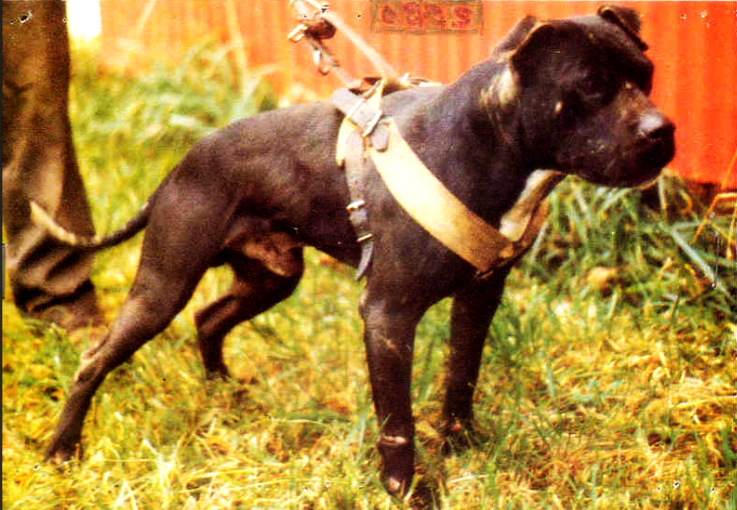Yes, American Pit Bull Terriers are very trainable dogs. The APBT is known to be a loyal, intelligent, athletic and affectionate breed.
The APBT has four breeds in total: American Pitbull Terrier, American Staffordshire Terrier, Staffordshire Bull Terrier and the American Bully.
A true red nose pitbull usually has a full-on red coat with a matching coppery-colored nose. Their eyes have a striking color combination of red or amber. There are many lines of American Pit Bull Terriers that contain this genetic coloration such as the redboy/jocko bloodline.
A blue nose APBT has a grayish-purple coat and a nose with the same color as their coat and blue colored eyes which comes from a recessive gene.
An APBT usually stops growing when they are around 18 months old. They usually take up to 3 years to fully grow into their body.
No, an APBT is generally not a good guard dog as they are very affectionate to people and do not have an instinct to protect people nor livestock.
The average lifespan of an APBT is from 8-14 years old. If the APBT was kept in healthy shape, they can reach up to 18 years old. Hip dysplasia is common in older American Pit Bull Terriers.
Yes, an APBT excels in many dog sports. They were originally bred for fighting but currently fit the role of hunting, flyball, advanced obedience competition, and weight pulling.
These dogs are very people-oriented, energetic, easy to train, very athletic and are genetically bred to perform tasks.
Around 150 years ago, old english terriers and old english bulldogs were bred together to create a dog that would have strength and athleticism.
An APBT encompasses many bloodlines such as Carver, Eli, Redboy, Jocko, Bolio and much more.
Finding a good sporting dog is challenging and difficult. Avoiding breeders that peddle and hang false pedigrees is prevalent. It is recommended to find a reputable breeder to purchase an APBT.
When browsing our pedigree database, you will be able to see ancestors for over 20-30 generations. By going through these pedigrees you will be able to see if the APBT comes from healthy ancestors and whether there may be any genetic defects.
Yes, you can view a pedigree and see all prior registered ancestors on our Pedigree Database.
Yes, you will be able to see all siblings and offsprings of pedigrees posted on our Pedigree Database. Just click on the pedigree and select "Siblings" from the menu.
Yes, an offspring report is included on our Pedigree Database. Select the pedigree and select "Offspring" from the menu.
This is unfortunately possible. As much as all degrees of authentication are taken, the only possible way to confirm a pedigree is through DNA testing.
Yes, after logging in, select "For Sale". You will be able to see the picture and pedigree of the puppy or grown dog.
An inbreeding coefficient gives the probability that different pairs of genes are identical. It is preferred that a sporting dog is neither inbred nor outcrossed, but instead for the dog to have a healthy balanced gene pool that allows for characteristics of prevalent ancestors to reappear.
Yes, you can easily print a copy for your records from our database. Just sign in, select the pedigree, and print the pedigree.


